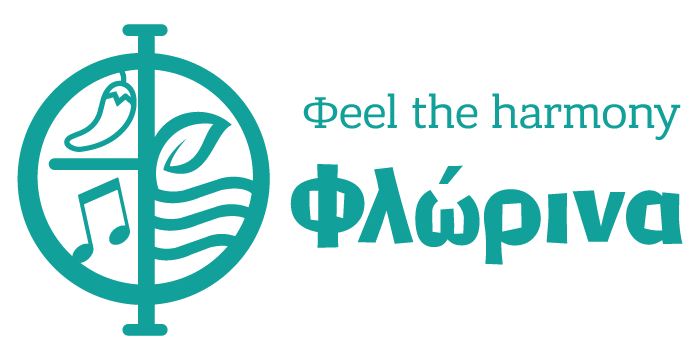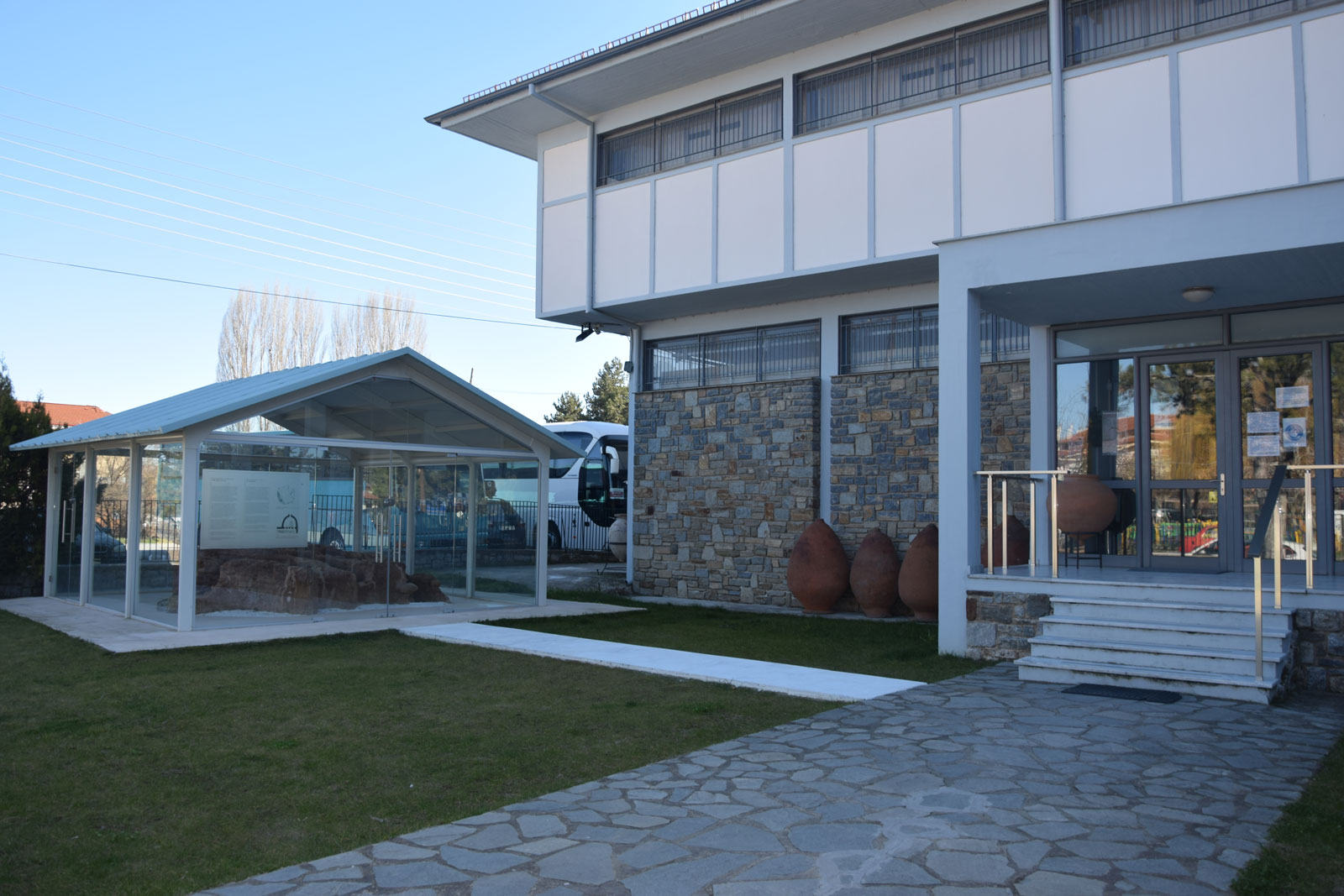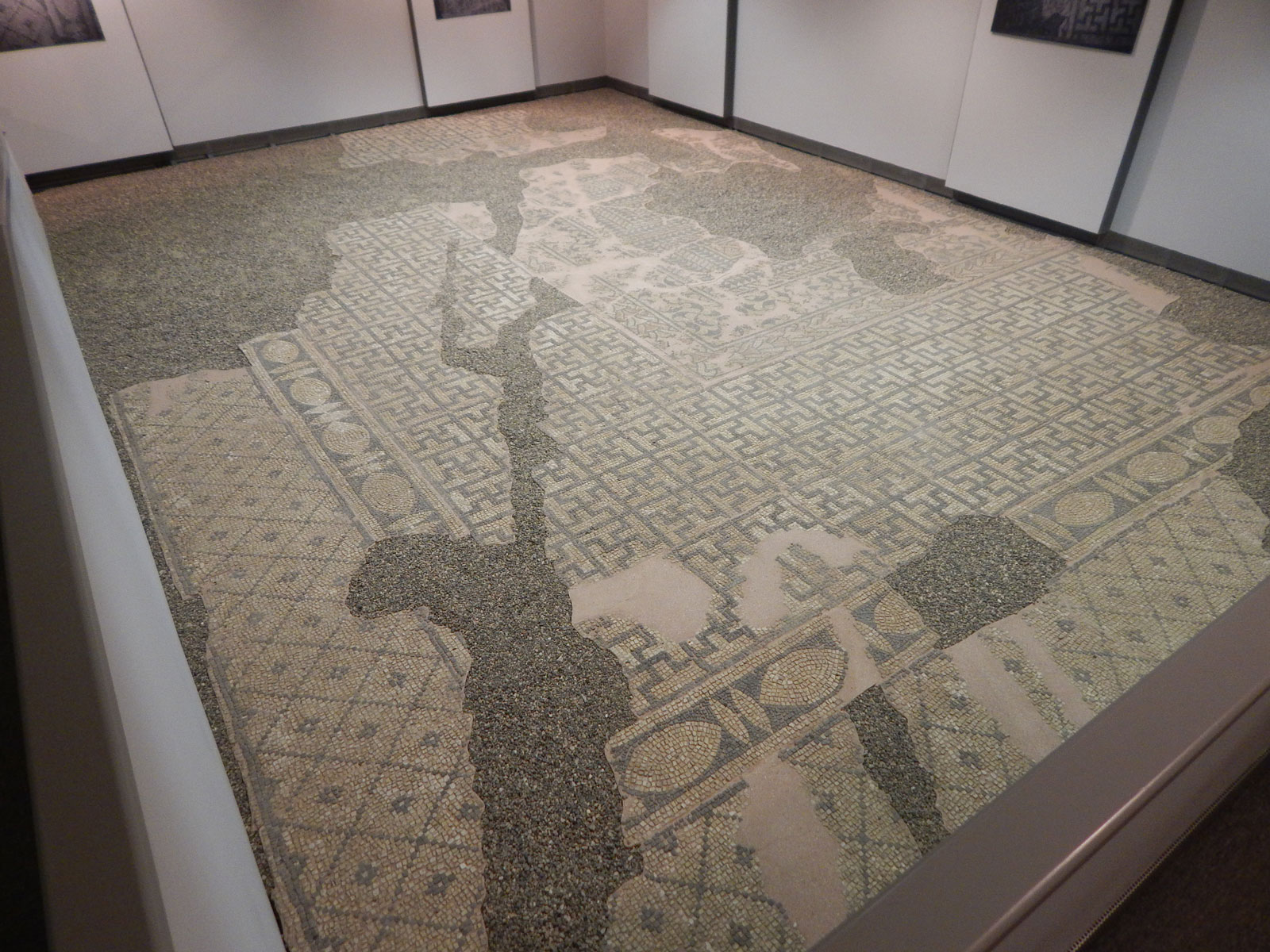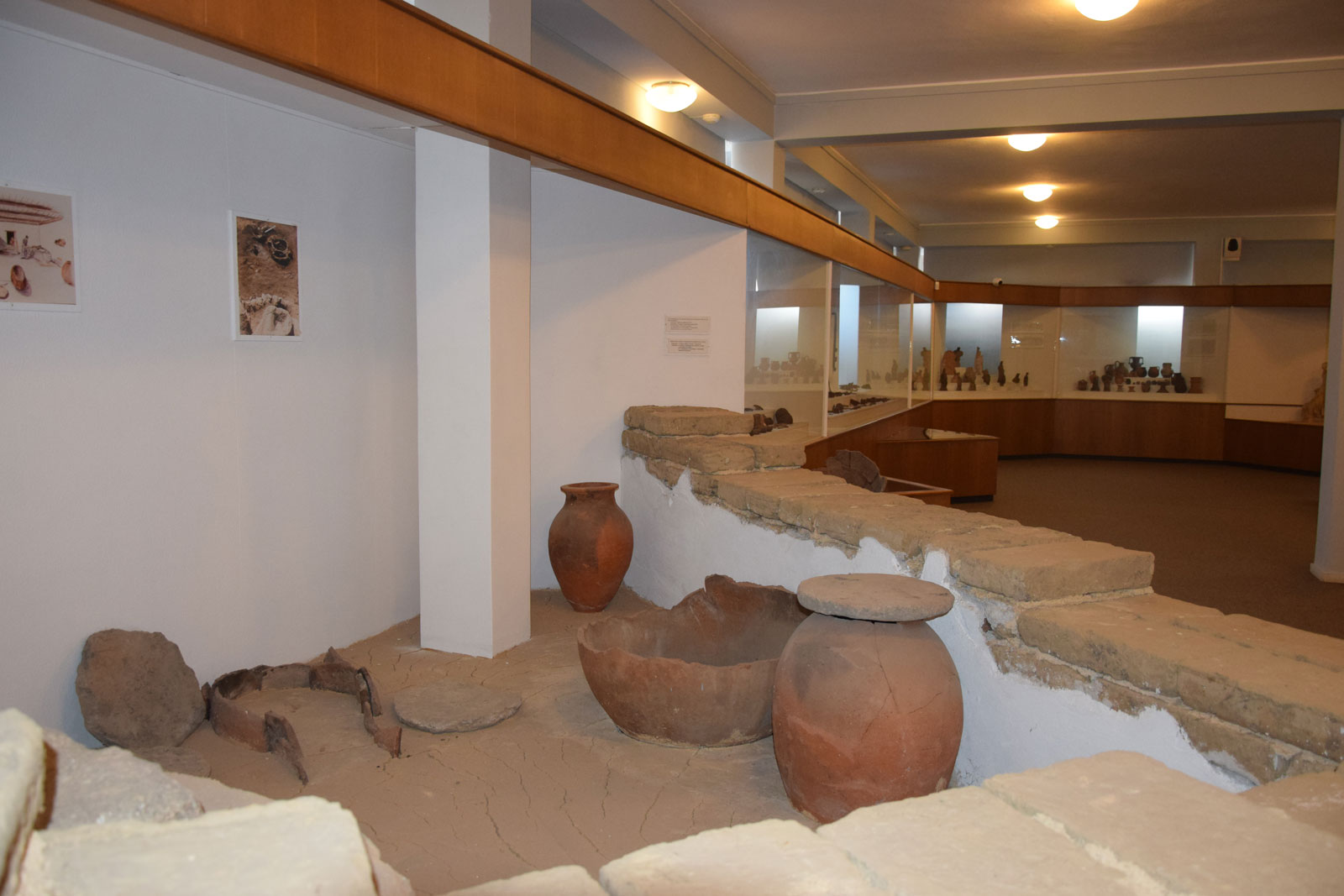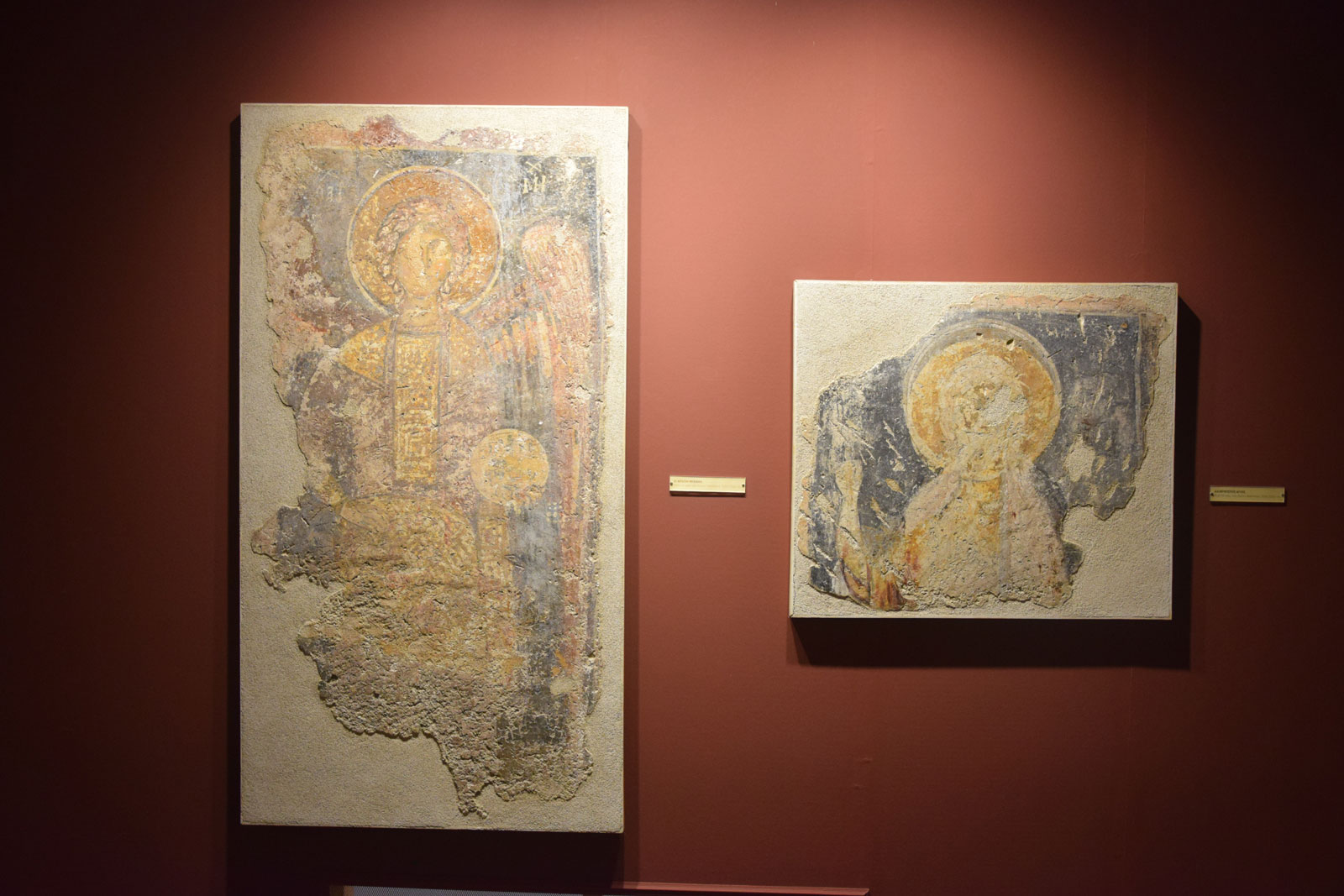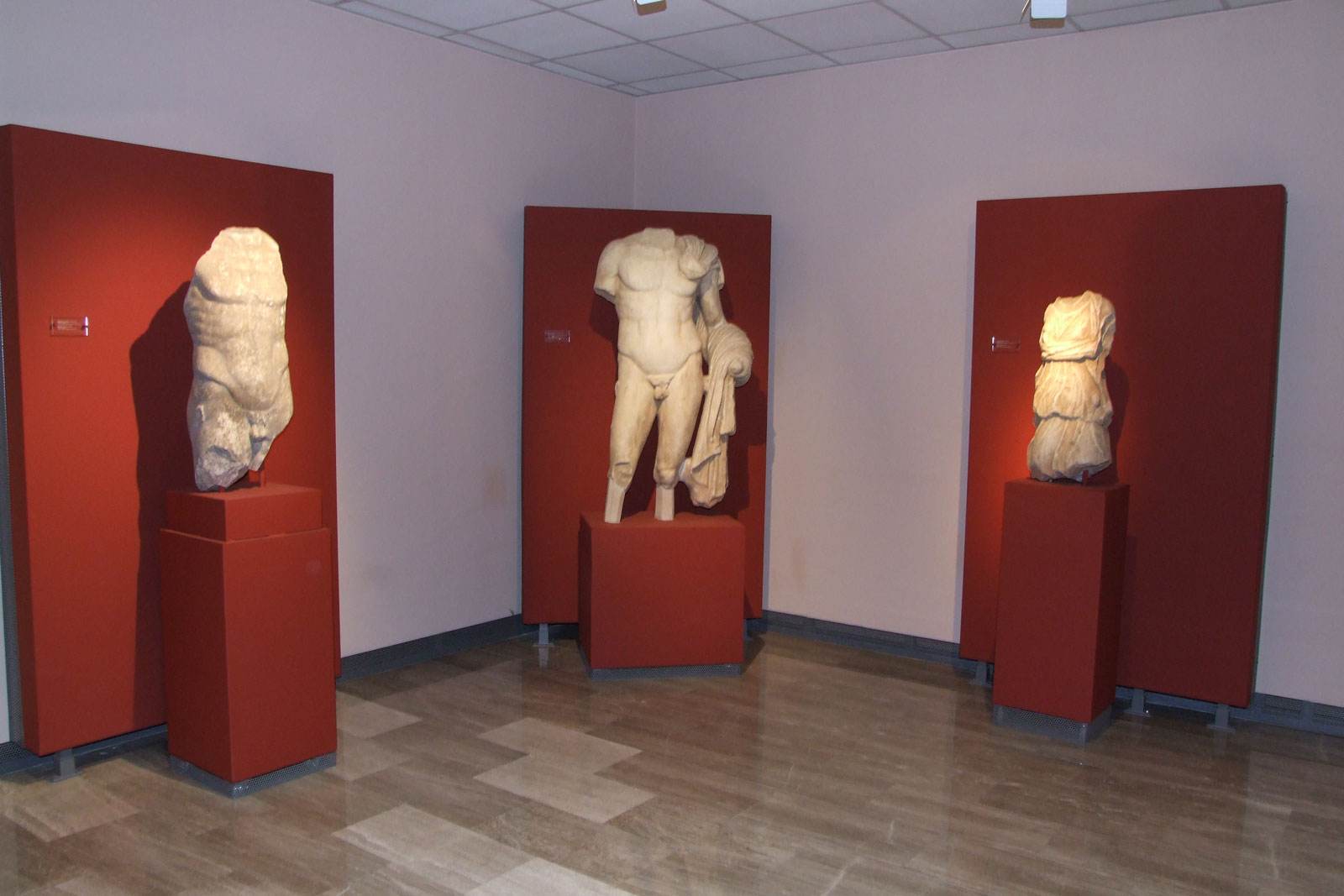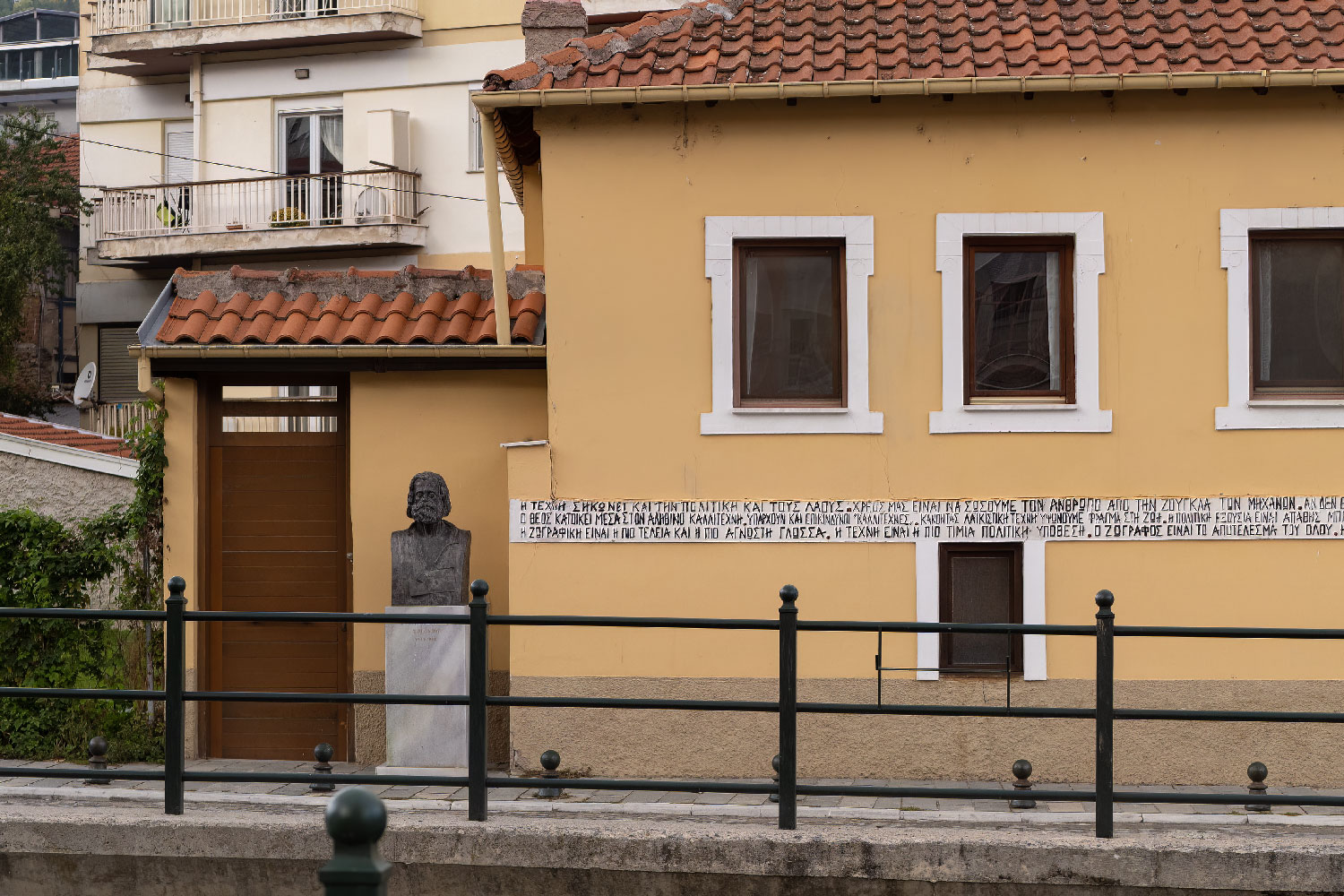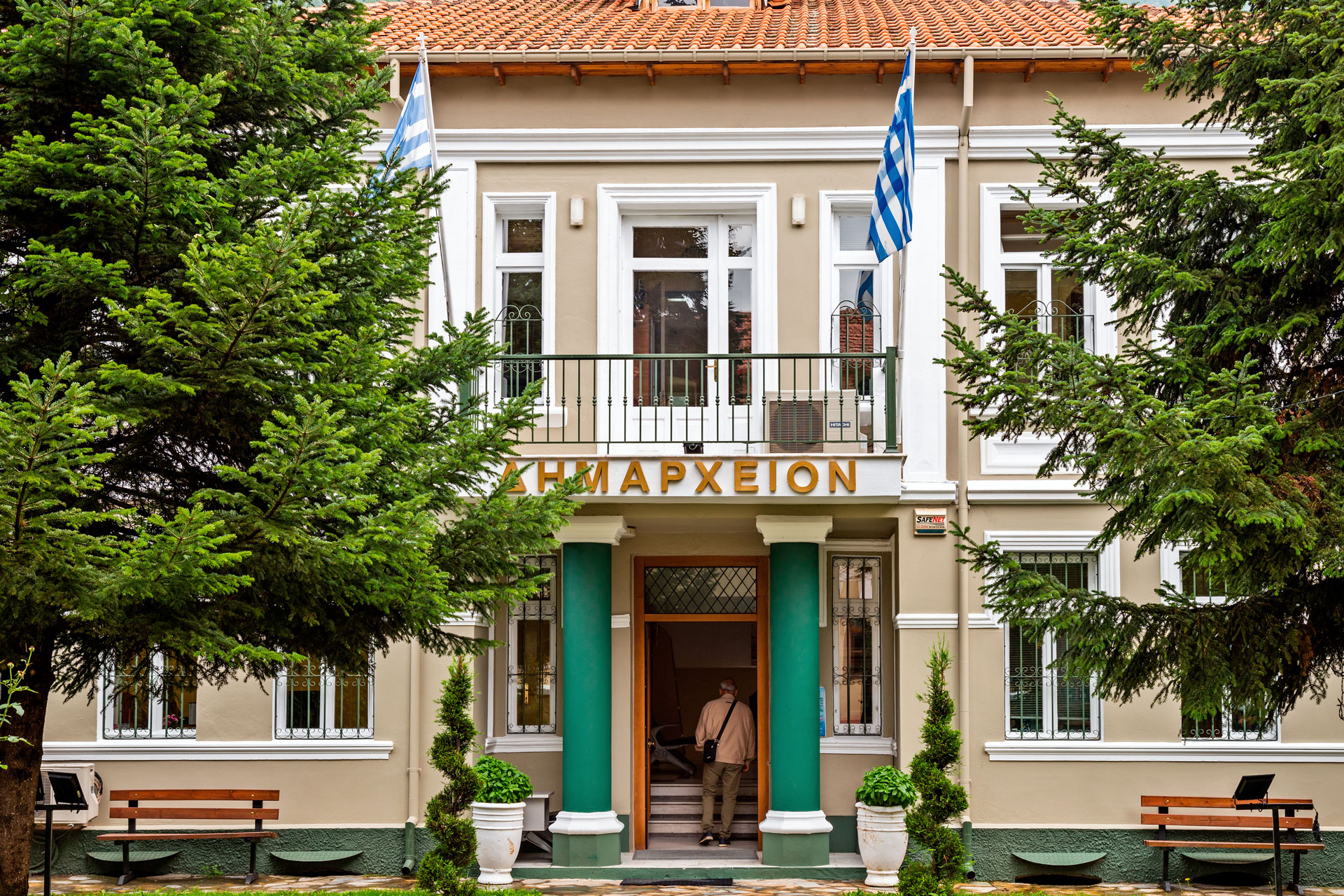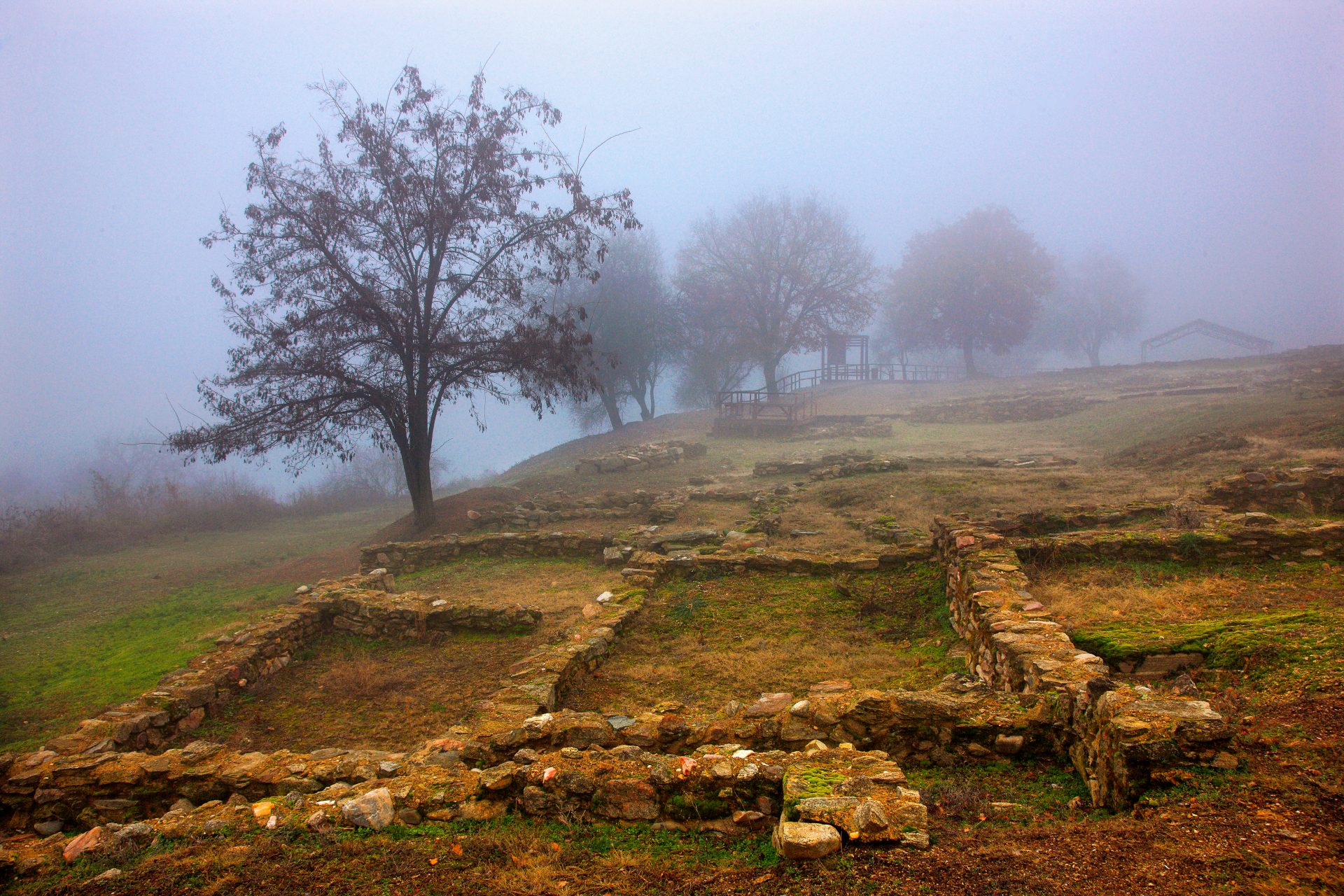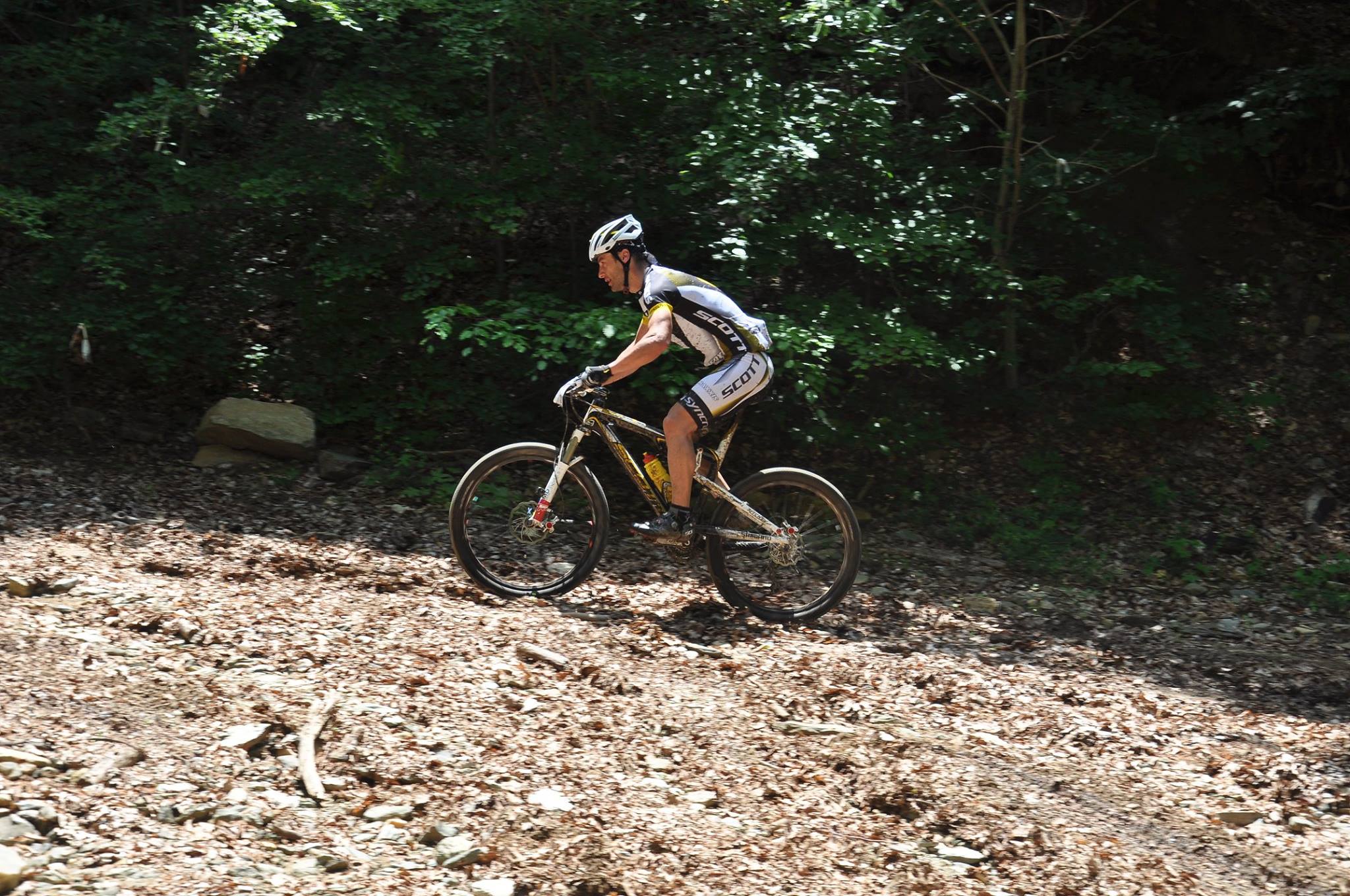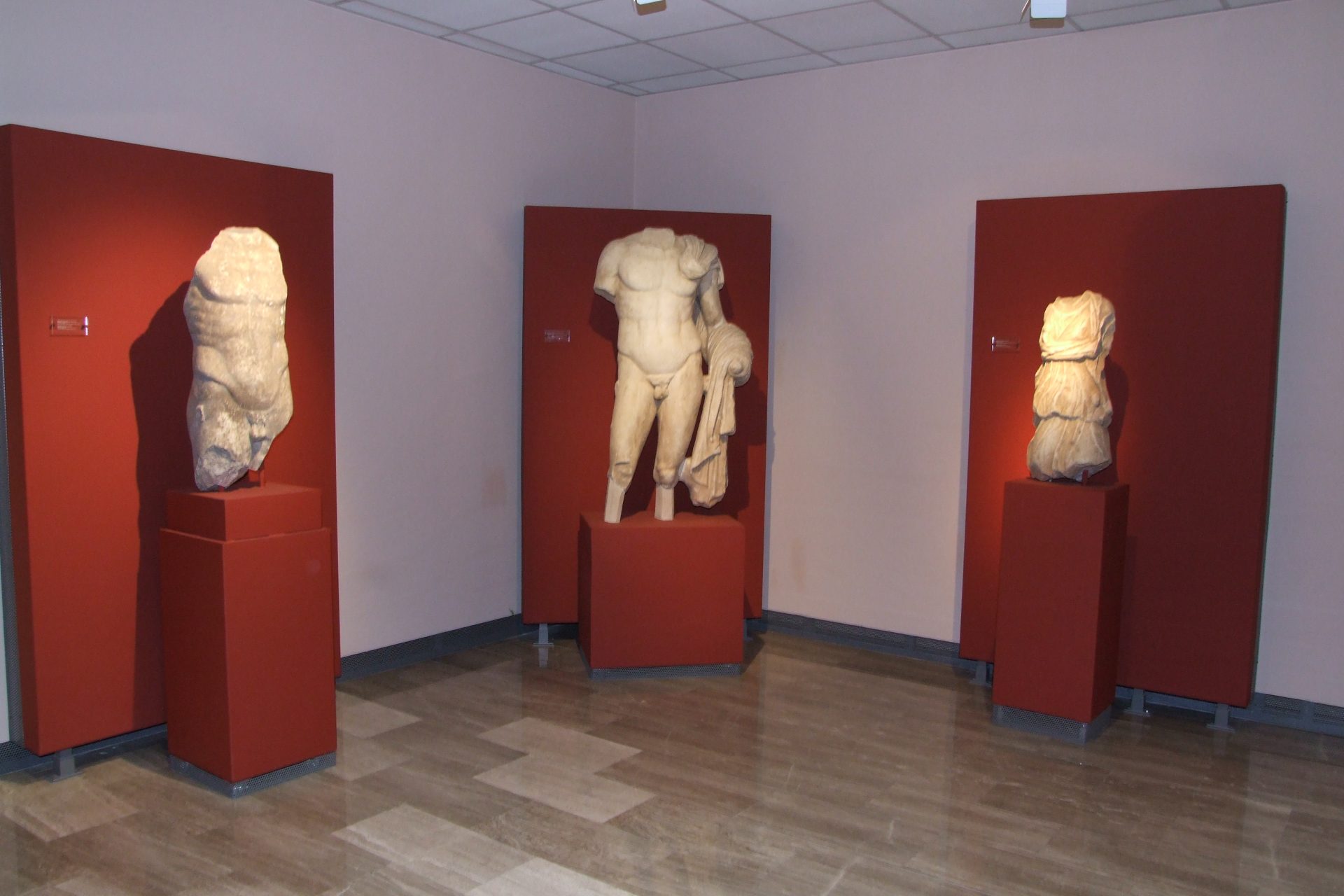
Archaeological Museum of Florina
It is housed in a building of the 1960s. The existing exhibition of antiquities was organized on the first floor and the ground floor in 1991 and 1998 respectively. The ground floor exhibits findings from the excavation of the Bronze Age settlement of Armenochori, with rich illustrative material on the construction techniques of houses, vessels and tools as well as on the productive activities that developed in the prehistoric settlement. Also exhibited are tombstones and votive stelae, as a rule inscribed, mainly of Roman times, carved sculptures and inscriptions, all of them Greek, from various areas of the P.E. Florina. In a room on the ground floor there is also a mosaic floor from a Roman building in Kato Kleines, which was detached, restored and reinstalled in the Museum. The floor presents the most representative findings of the excavations in two Hellenistic cities, in Florina and Petres Amyndeon: numerous vases for various uses, clay figurines, metal tools, cult objects, valuable evidence of the public and private life of the inhabitants, their religion and their various agro-industrial activities.Also on display are parts of the local decoration of the houses in Petres, sculptures and road markers of the Egnatia Road. The Byzantine period includes parts of 12th-century frescoes from the basilica of St. Achilleios on the island of the same name, as well as the marble presbytery barrier from the same church, parts of a wooden carved temple and stepping stones from monuments in Prespa, as well as vases and jewellery from excavations in the same area.
SOURCES OF TEXTS: Archaeological Museum of Florina.
SOURCES OF PHOTOS: Archaeological Museum of Florina.
